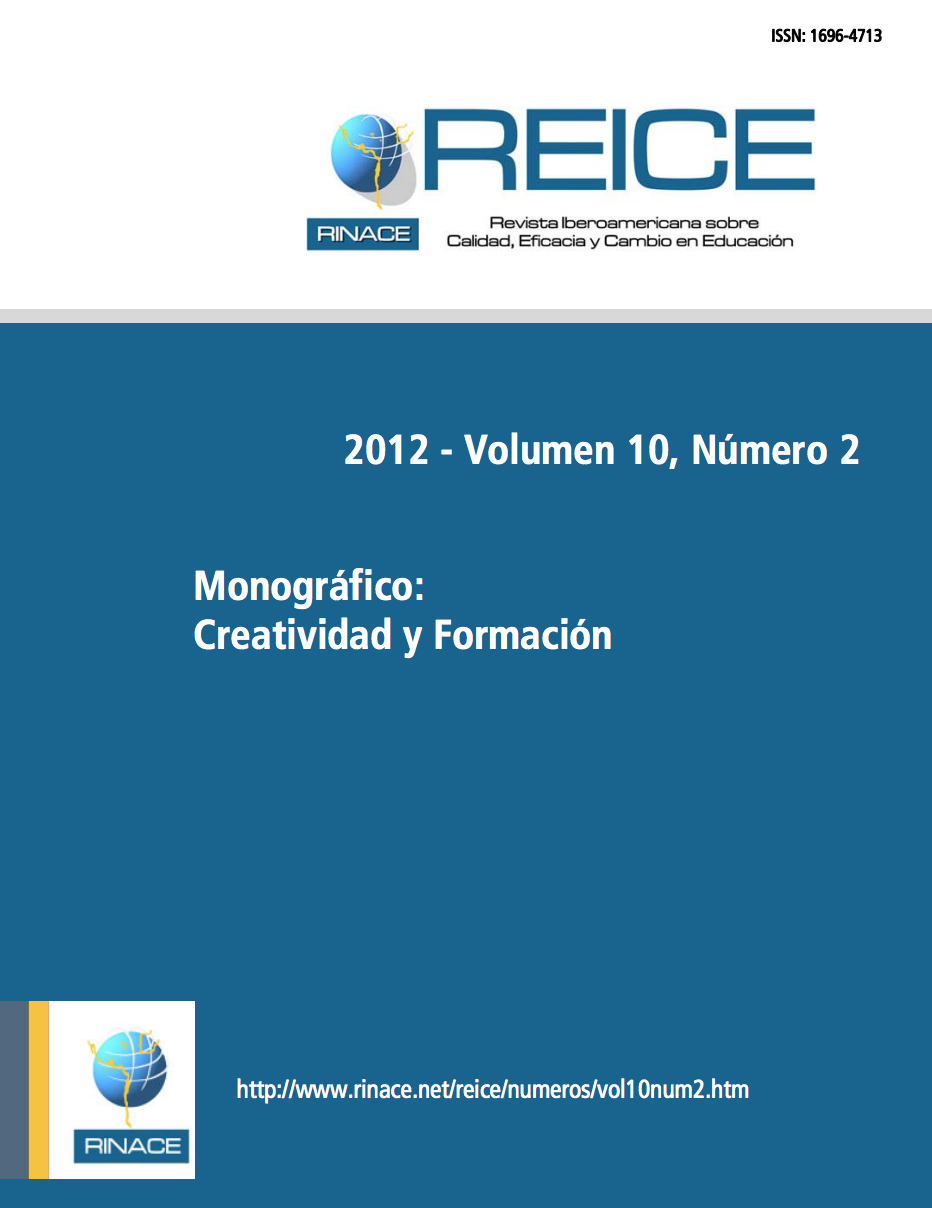Keywords:
Creativity, consciousness, creative processCopyright (c) 2016 REICE. Revista Iberoamericana sobre Calidad, Eficacia y Cambio en Educación

This work is licensed under a Creative Commons Attribution-NonCommercial-NoDerivatives 4.0 International License.
Abstract
The study of creativity as a basic element of human development from its inception has given keys to development competencies and skills in people to enable them to cope with autonomy ever changing environments by the dynamics social, economic and labor in which countries are immesed today. For different researchers and to those labor markets is related to creativity and innovation responses to problems arising from the news demands of consumers. entrepreneurship education is presented an opportunity for entrepreneurs to work and develop their creativity. This type of education and institutional support policies through Entrepreneurship and self-employment can strengthen the production and business Spanish through a network of people innovative to meet the challenge that is generating the economic crisis currently affecting the countries. Creativity applied through entrepreneurship education can lead to improvements in the professional transition process by workers from the end or drop out to school until entering in the labor market.
Downloads
References
Anderson, B. (2007). Conoce el poder de tu campo cuántico. Aprende a utilizar a tu favor la energía del universo. Barcelona: Urano.
Capra, F. (2009). La trama de la vida. Una nueva perspectiva de los sistemas vivos. Barcelona: Anagrama.
Csikszentmihaly, M. (1997). Fluir. Una psicología de la felicidad. Barcelona: Kairós.
Csikszentmihaly, M. (1998). El fluir y la psicología del descubrimiento y la invención. Barcelona: Paidós.
Csikszentmihaly, M. (1998). Aprender a fluir. Barcelona: Kairós.
Goswami, A. (2009). El médico cuántico. Guía de la física cuántica para la salud y la sanación. Barcelona: Obelisco.
Krishnamurti, J. (2009). Sobre la educación. Barcelona: Kairós.
Kuhn, T.S. (1989). Qué son las revoluciones científicas y otros ensayos. Barcelona:Paidós Ibérica.
Lukas, E. (2011). Viktor E. Frankl. El sentido de la vida. El pensamiento esencial de Viktor E. Frankl. Barcelona: RBA REVISTAS, S.L..
Menchén, F. ( 2008). La creatividad en el aula. Santiago de Chile: Conocimiento.
Menchén, F. (2009). La creatividad transforma la realidad. En Revista Educación y Futuro. Centro de Enseñanza Superior en Humanidades y Ciencias de la Educación Don Bosco. Madrid. Nº 21. Octubre, págs. 89 – 110.
Menchén, F. (2011). La riqueza del tiempo libre. Cómo activar la creatividad en el tiempo de ocio. México: Trillas.
Osho (2010). Cambio. Cómo convertir una crisis en una oportunidad. Barcelona: Grijalbo.
Pereiro, G. (2007). La evolución es creatividad. El pensamiento circular. Buenos Aires: Kier.
Sheldrake, R. (2005). Caos, creatividad y conciencia cósmica. Castellón: Ellago.
